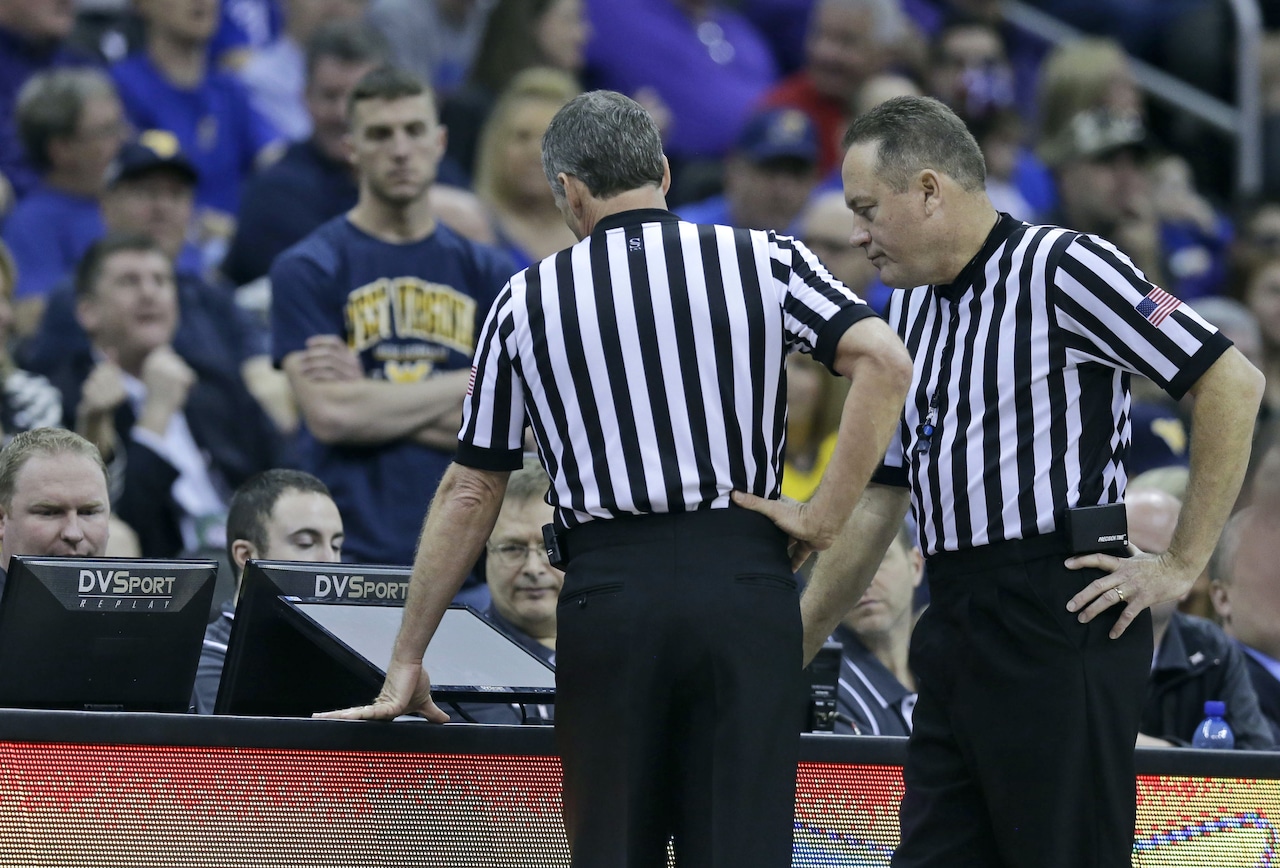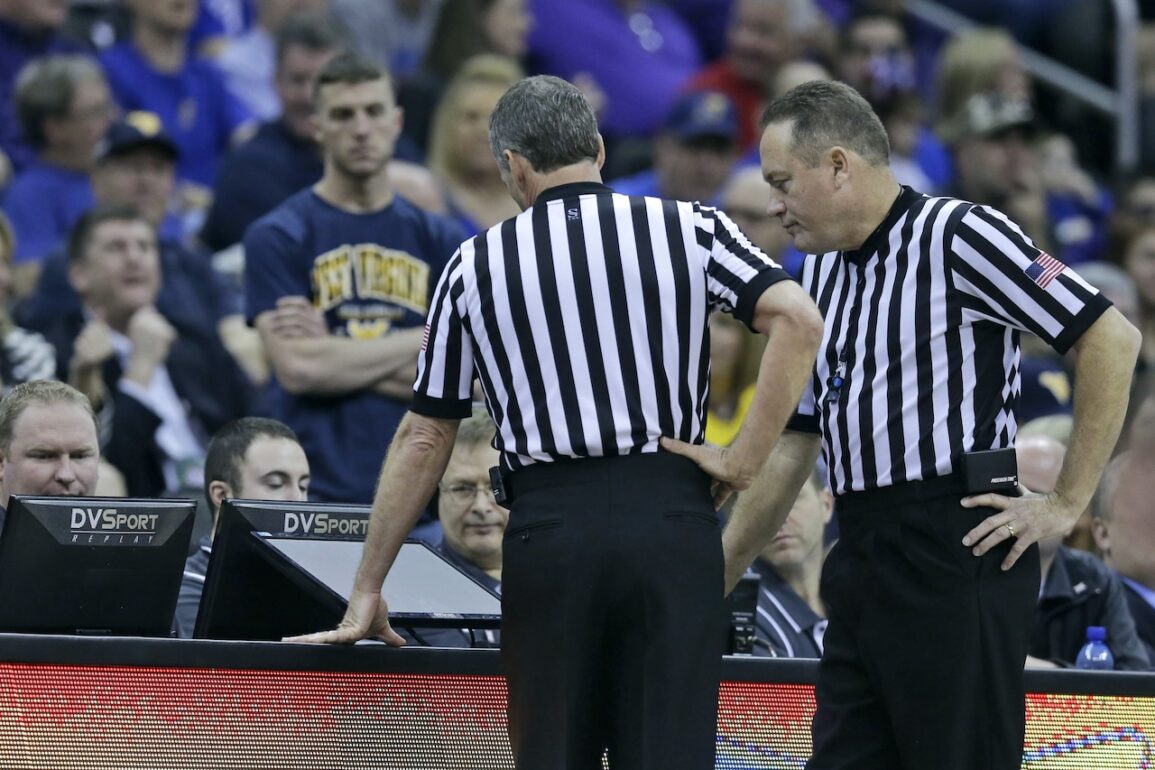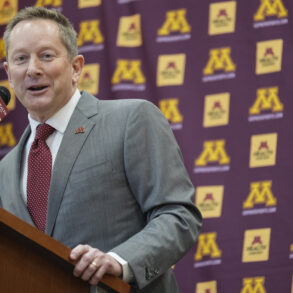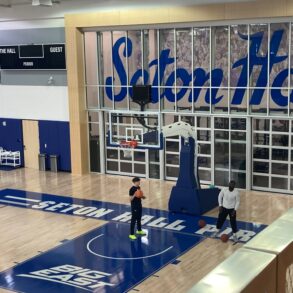
Major changes are likely coming to the college basketball replay review system, designed to improve the flow of the game and allow coaches to challenge certain calls, the NCAA announced on Friday.
Members of the NCAA basketball rules committees for both the men’s and women’s games are meeting this week in Indianapolis. They’ve proposed several changes that, if adopted by the playing rules oversight panel on June 10, would go into effect for the 2025-26 season.
On the men’s side, recommendations include a coach’s challenge at any point in a game to review out-of-bounds calls, basket interference/goaltending, and whether a secondary defender was in the restricted-area arc.
A team must have a timeout in order to challenge a call. If the call is overturned, the team is allotted an additional challenge. If the call is upheld, the team can’t challenge again.
Referees can still initiate, on their own, video reviews for goaltending and restricted arc plays in the last two minutes of regulation and into overtime, but — and this is as an important distinction from previous seasons — they can’t do so for out-of-bounds calls.
In recent years, out-of-bounds calls in particular slowed close games to a crawl in the final minutes.
“The committee focused on the flow of the game, especially the increased number of stoppages at the end of the game, this past season,” said Karl Hicks, committee chair and associate commissioner for basketball at the American Athletic Conference, in the NCAA’s announcement.
“Prioritizing the game flow at the end of the game was particularly important for our committee.”
The committee liked the NBA’s coach’s challenge system and adopted it.
Michigan head coach Dusty May will certainly be in favor. After a game in January in which the five-minute overtime period lasted longer than 30 minutes of real time, May voiced his complaints. “I think that if we challenge we should lose a timeout if it’s egregious. But I’m not making these rules. If I was making rules, I’d change several. So there’s no point for me to sit here and talk about any of those.
“Do I like it? No. The fans don’t like it. Television? Maybe they sell (advertisements). I don’t know. I don’t know who likes it. But the officials are trying to do their job and they’re trying to get it right and that’s the most important thing. But I think you can freeze frame anything and make it look one way or another.”
Other changes were recommended for next year or beyond.
According to the NCAA, there is “positive momentum” for moving from two halves to four quarters, like the women’s game. “The committee realizes there are hurdles to implementing the quarter format to the game, including the structuring of media timeouts to accommodate commercial inventory.” The committee recommended that a separate committee look into the potential effects.
Expect more “and-ones,” or at least shooting fouls, in the men’s game next season. The committee also recommended modifications to the “continuous motion rule: An offensive player who ends his dribble going toward the basket and absorbs contact from the defense would be permitted to pivot or complete the step the player is on and finish the field goal attempt.”
Hicks said that under the current rule, offensive players are not being properly rewarded for “really good moves.” The proposed change would make college basketball more like the NBA and high school basketball.
The committee proposed a few other changes: officials can call a flagrant 1 foul if there is contact to the groin; a player using the rim “to gain an advantage” would be called for basket interference; one malfunctioning shot clock does not mean the other has to be turned off.
A coach’s challenge system was suggested for women as well, though with slightly different parameters. Plays that could be challenged include out-of-bounds calls, backcourt violations, whether possession changed before a foul call that would result in free throws, and whether a foul was assessed to the correct player.
Officials could not initiate reviews on those calls with the exception of whether a foul was assessed to the correct player. Unlike in the men’s game, women’s coaches would not need a timeout to challenge a call. However, a failed challenge would result in a technical foul.
“The committee was concerned with pace of play and the number of reviews occurring at the end of games,” said Nicki Collen, rules committee chair and head women’s basketball coach at Baylor, in a statement.
“This was also an experimental rule in this year’s WBIT. By removing the option for officials to review called out-of-bounds violations and allowing coaches to challenge the call, you increase flow at the end of games while still allowing for the opportunity to get the call right.”
There were six other rule change proposals:
- Resetting the shot clock to 20 seconds when, following a dead ball, the offense is awarded the ball in its front court.
- Eliminating the rule that jerseys need to be tucked in.
- Using excessive timeouts or playing with six players when the ball becomes live will become team technical fouls. These violations would count toward team fouls, and the team will be awarded possession at half court following the free throws.
- Allowing players to complete a jump stop when their feet land approximately at the same time. This will be a legal move and would not be considered a travel. Committee members believe this change can increase the accuracy on traveling rulings.
- Allowing defenders multiple one-hand (hot stove) touches on stationary players holding the ball or on a dribbler. These touches would be legal as long as they are not repetitive and do not affect the rhythm, speed, balance and quickness of the dribbler or reroute the offensive player.
- If a player competes in a game that the player should have missed due to a suspension, the player and the head coach would both have to serve a one-game suspension for the next scheduled game.
The 2025-26 season, for both men and women, is scheduled to start in early November.
This post was originally published on this site be sure to check out more of their content.








